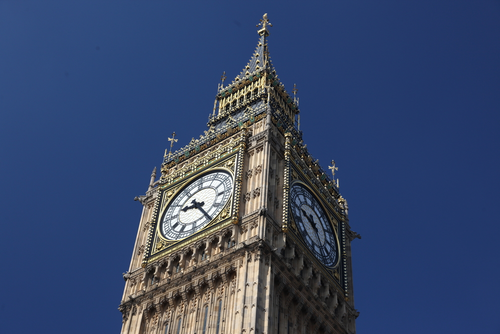Measurement of Angles
Solved Problems
Example 1.
GPS coordinates are given in decimal degrees:
\(latitude: 36.52569^\circ\;,\) \(longitude: - 5.04784^\circ.\)
Write the coordinates in degrees, minutes and seconds.
Solution.
Convert the latitude:
Similarly we find the longitude:
Example 2.
New York City is located at
\(latitude: {40^\circ} 43^\prime 50.196^{\prime\prime},\;\) \(longitude: -{73^\circ} 56^\prime 6.871^{\prime\prime}\)
Write the coordinates in decimal degrees.
Solution.
Calculate the latitude:
The longitude is given by
Example 3.
A wheel has a radius of \(0.3\,m.\) How many full rotations does the wheel make if it travels \(10\,m?\)
Solution.
When a wheel of radius \(R\) makes one full rotation, it travels the distance \(2\pi R.\) So the number of rotations is determined by the formula
where \(L\) is the distance traveled.
By substituting the values of \(L\) and \(R,\) we have
Hence, the wheel makes \(5\) full rotations.
Example 4.
Find the radian measure of an angle of \(10000^\circ.\)
Solution.
First we determine the number of full rotations \(N.\) Since one full rotation is \(360^\circ,\) then
Each rotation is \(2\pi\) radians. Therefore, \(10000^\circ\) is equal to
Example 5.
The diameter of human hair is about \(75\,\mu m.\) How far from the observer is the hair if it is seen at an angle of \(1\) second?
Solution.
Using the formula \(\alpha = \frac{\ell }{R},\) we express the distance \(R\) from the observer to the hair in terms of \(\ell\) and \(\alpha:\)
We write the diameter of hair \(\ell\) in meters:
The angle \(\alpha\) in radians is given by
Then
Example 6.
The minute hand of Big Ban, the Elizabeth Tower clock in London, is \(4.3\,m\) long. What distance does the tip of the minute hand travel in \(20\) minutes?
Solution.

The minute hand makes one full rotation \(\left( {2\pi }\,rad \right)\) in \(60\) minutes. So in \(20\) minutes, the hand turns \(2\pi \times \frac{{20}}{{60}} = \frac{{2\pi }}{3}\,rad.\) The distance moved by the tip of the hand is
Example 7.
Find the area of a sector with central angle of \(3\) radian in a circle of radius \(1\,m.\)
Solution.
We use the formula
Substitute \(\alpha = 3\,rad,\) and \(R = 1\,m:\)
Example 8.
A sector in a circle has the area \(A\) and arc length \(\ell.\) Find the radius of the circle.
Solution.
The arc length \(\ell\) of a central angle \(\alpha\) is expressed by the formula \(\ell = \alpha R,\) where \(R\) is the radius of the circle. The area of a circular sector is given by \(A = \frac{\alpha {R^2}}{2}.\) If \(A\) and \(\ell\) are known, we can find \(\alpha\) and \(R\) from these two equations.
Thus, the radius of the circle is given by \(R = \frac{{2A}}{\ell }.\)